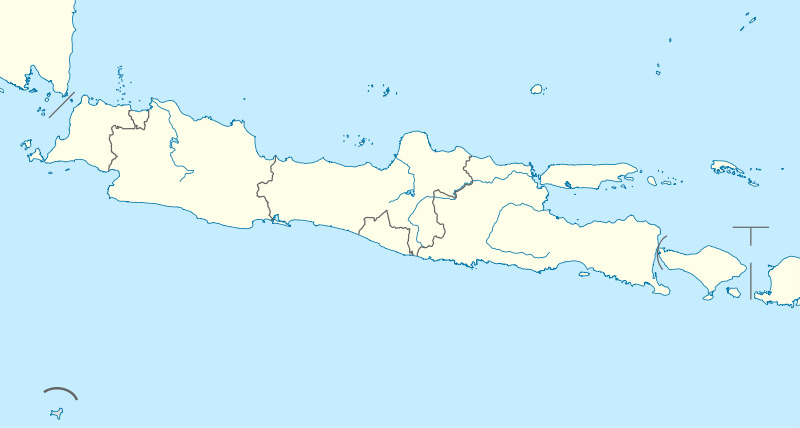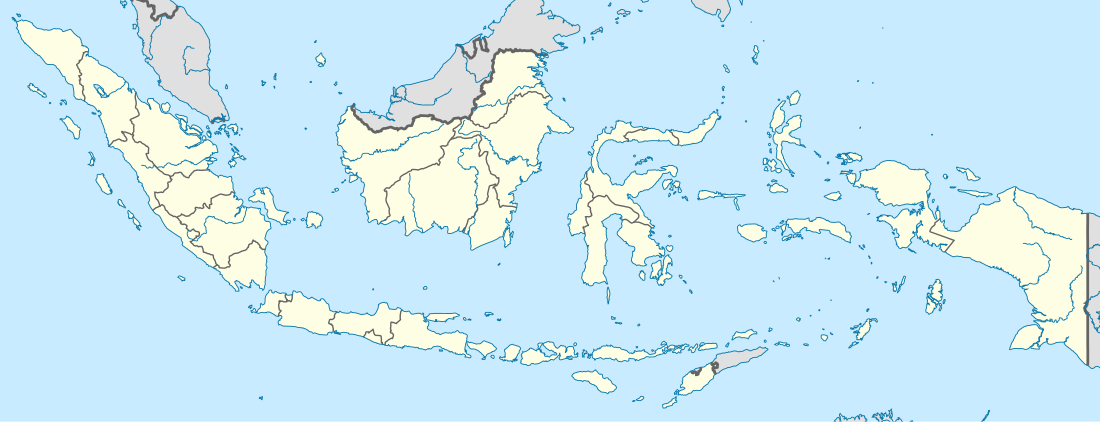Bogor Regency
Bogor Regency (Indonesian: Kabupaten Bogor) is a regency (kabupaten) of West Java, Indonesia, south of DKI Jakarta. It is considered a bedroom community for Jakarta, and is home to about six million people.[1] Its administration is located in Cibinong.
Bogor Regency Kabupaten Bogor ᮊᮘᮥᮕᮒᮨᮔ᮪ ᮘᮧᮌᮧᮁ | |
|---|---|
Regency | |
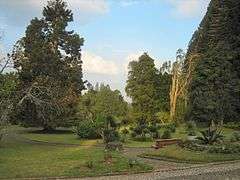  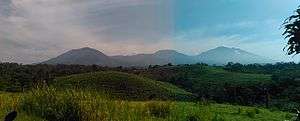 | |
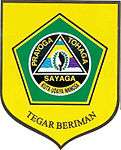 Seal | |
| Motto(s): Prayoga Tohaga Sayaga Kuta Udaya Wangsa Tegar Beriman | |
 Location within West Java | |
| Coordinates: 6°28′49″S 106°49′29″E | |
| Country | Indonesia |
| Province | West Java |
| Capital | Cibinong |
| Government | |
| • Regent | Ade Yasin |
| Area | |
| • Total | 2,663.83 km2 (1,028.51 sq mi) |
| Population (2017) | |
| • Total | 5,715,009 |
| • Density | 2,100/km2 (5,600/sq mi) |
| Time zone | UTC+7 (WIB) |
| Area code(s) | 0251 |
| Website | bogorkab.go.id |
It is bordered by Tangerang Regency, the cities of South Tangerang, Depok and Bekasi, and finally Bekasi Regency, all to the north, Sukabumi Regency to the south, Cianjur Regency to the southeast, and Karawang Regency to the east; it fully encircles Bogor City, although the latter is administratively independent of the regency. It is bordered by Lebak Regency (in Banten Province) to the west, although the western 14 districts (kecamatan) of the present Bogor Regency are in the process of being split off to form a new West Bogor Regency.
The area has witnessed significant population growth. Two areas formerly within the Regency have been split off as autonomous cities; on 20 April 1999, the city of Depok was unified with some neighbouring districts of Bogor Regency to form an autonomous city of Depok (independent of the Regency); and Bogor city is also an autonomous city (similarly independent of the Regency).
In the 2010 census the Regency (minus the autonomous cities) counted 4,770,744 people, of which 2,450,426 are male. The latest official estimate (for mid 2017) is 5,715,009.[2] Given that the regency covers 2,663.83 km2 after the spinoffs of Bogor and Depok cities, the density stands at 2,145 people per km2.[3]
Cibinong is its capital.
The regency is currently subdivided into 40 districts (kecamatan).
The Dutch name of the regency is 'Regentschap Buitenzorg'.
Nature reserves (cagar alam)
Within Bogor Regency the following nature reserves exist:
Administration
Bogor Regency comprises 40 districts (Kecamatan), listed below with their areas and populations at the 2010 Census,[6] and according to the latest official estimates (for mid 2017):[7]
|
|
The 14 districts due to be split off to form the new West Bogor Regency are shown in the right-hand set of columns; the 26 districts in the east of the Regency (which will remain part of Bogor Regency) are shown in the left-hand set of columns.
The above list excludes the six districts which comprise the autonomous city of Bogor:
- Bogor Barat (211,084 in 2010)
- Bogor Selatan, (181,392 in 2010)
- Bogor Tengah (101,398 in 2010)
- Bogor Timur (95,098 in 2010)
- Bogor Utara (170,443 in 2010)
- Tanah Sareal (190,919 in 2010)
Tourism
In Ciapus village, Ciomas district there are three waterfalls which can be easily reached by local tourists using Angkot 03 from Bogor to Ciapus in about 45 minutes. They are Curug (Waterfall) Daun, Curug Nangka and Curug Kawung. About 8 kilometers from the gate there is another waterfall in Gunung Malang village, Gunung Malang district. The Curug Luhur falls are 50 meters high and easily accessible.[8]
References
- "Archived copy". Archived from the original on 2013-10-14. Retrieved 2013-07-08.CS1 maint: archived copy as title (link)
- Badan Pusat Statistik, Jakarta, 2019.
- "Archived copy" (PDF). Archived from the original (PDF) on 2011-07-18. Retrieved 2011-01-18.CS1 maint: archived copy as title (link) BPS, Hasil Sensus Pendudukan 2010
- Badan Pengendalian Lingkungan Hidup Daerah (BPLHD) Archived February 28, 2008, at the Wayback Machine
- Whitten et al. (1996): The ecology of Java and Bali, Oxford University Press, ISBN 962-593-072-8
- Biro Pusat Statistik, Jakarta, 2011.
- Badan Pusat Statistik, Jakarta, 2019.
- "Menjelajah Wisata Curug yang Menantang". February 9, 2014.
External links
| Wikimedia Commons has media related to Bogor Regency. |
- (in Indonesian) Official Website
Linggo Mandiri Technik Tangsel Official website
